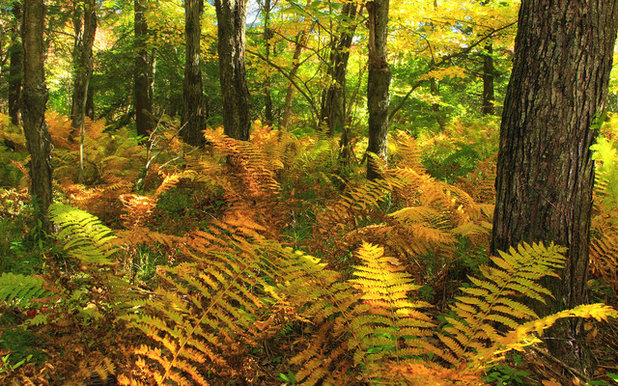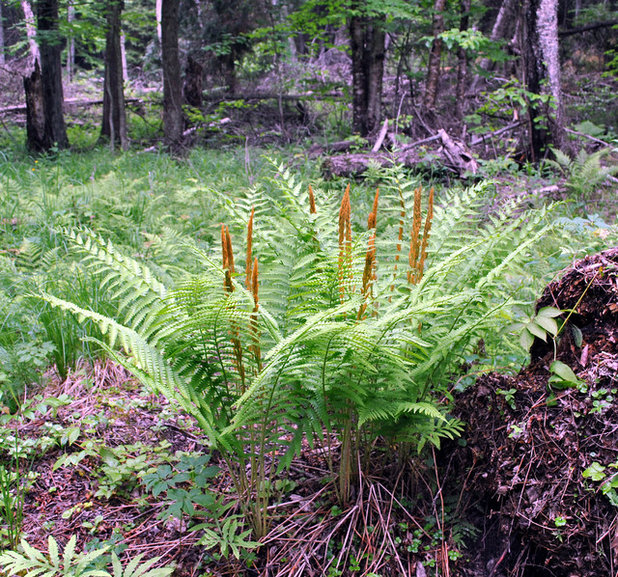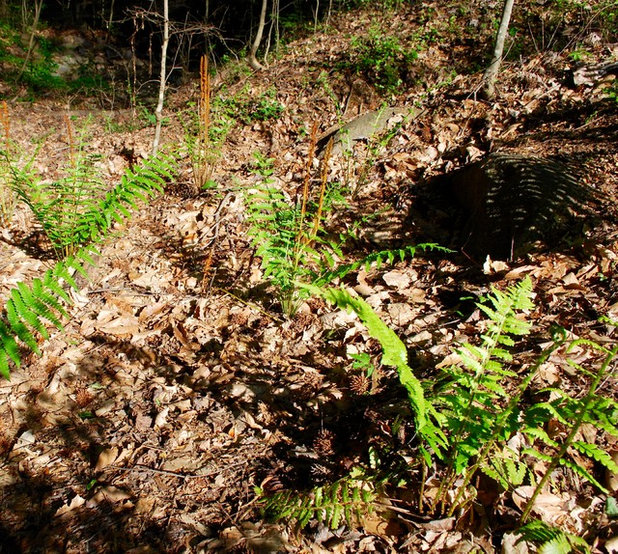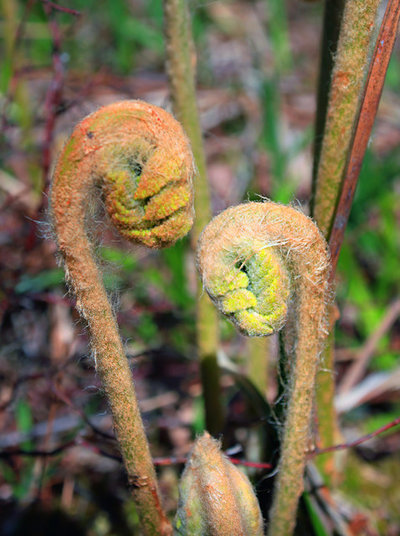There’s just something about ferns that brings tranquility to the shade garden. For me, they have the ability to instantly transport my mind from a busy workday to a peaceful hike on the Appalachian Trail, where patches of early-morning fog enshroud the mountaintop, turning it into a primeval wonderland. This is where you will find cinnamon fern (
Osmunda cinnamomea), one of our most unique eastern North American native ferns. Let’s see how to bring a bit of its magic into your garden.
 Botanical name: Osmunda cinnamomeaCommon name:
Botanical name: Osmunda cinnamomeaCommon name: Cinnamon fern
Origin: Eastern North and South America and eastern Asia
Where it will grow: Hardy to -40 degrees Fahrenheit (USDA zones 3 to 9; find your zone)
Light requirement: Partial to full shade
Water requirement: Medium to wet soil
Mature size: 2 to 4 feet tall and wide; wet soil helps this plant reach its mature size potential
Benefits and tolerances: Deer, rabbit and slug resistant, with no serious disease problems; tolerates heavy shade and wet soil but performs poorly in dry, sunny environments
Seasonal interest: This fern emerges in early to mid spring with very erect, cinnamon-colored fertile fronds (spore-bearing center fronds); fiddleheads come after these fertile fronds and gracefully unfurl into lacy, green infertile fronds (the outer, non-spore-producing fronds), which hold well through the summer before turning yellow in autumn and disappearing for the winter.
When to plant: Spring is best
Shown: Cinnamon fern’s fall color in New York
Photo by Nicholas A. Tonelli
 Distinguishing traits.
Distinguishing traits. The amazing fertile fronds (shown here) are cinnamon colored and appear to be powdery in texture, giving this fern its name. Additionally, cinnamon-colored fibers are found at the base of the plant. These fibers have historically been used as a potting medium for epiphytic orchids.

Jay Sifford Garden Design
How to use it. Cinnamon fern is most attractive when planted in groups; this is how it grows in its natural habitat and how it will make a strong statement in your garden. This fern is a good candidate for planting in areas with poor drainage, along ponds or near an outdoor faucet where water is readily available. Avoid overly dry or sunny areas for best results.
 Planting notes.
Planting notes. Site cinnamon fern in moist, shaded areas. Amending the soil with compost and mulching around the plant with a shredded hardwood mulch or leaves will produce the best growth. Water it well (two to three times per week) until it’s well established.
Shown: Emerging fiddleheads on cinnamon fern
Photo by Nicholas A. Tonelli





